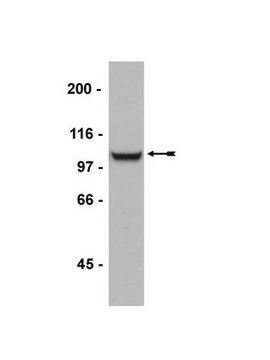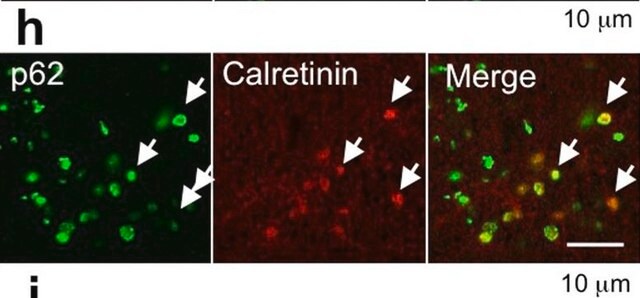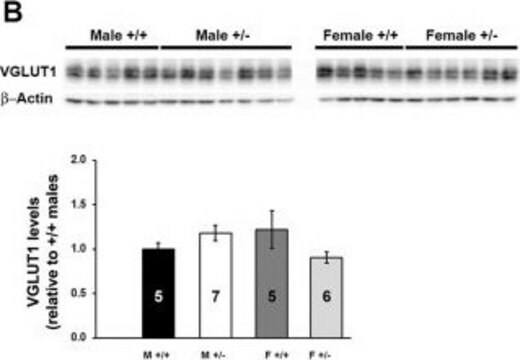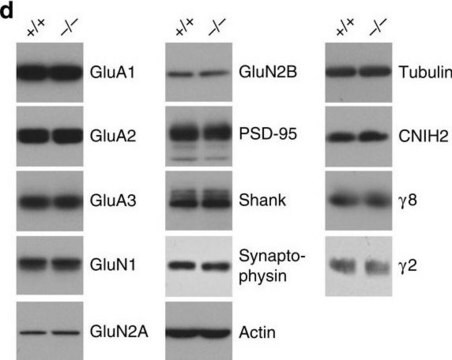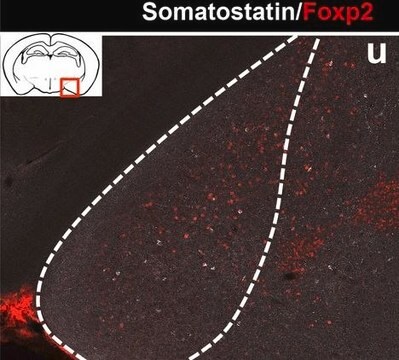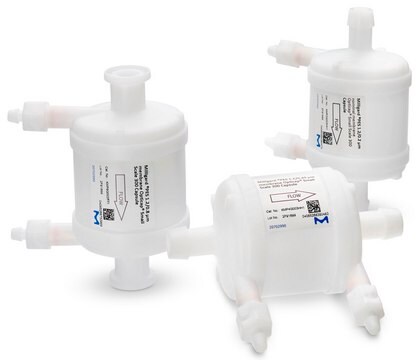AB1506
Anti-Glutamate Receptor 2 & 3 Antibody
Chemicon®, from rabbit
Synonym(s):
AMPA-selective glutamate receptor 2, AMPA-selective glutamate receptor 2, glutamate receptor 2, glutamate receptor, ionotropic, AMPA 2
About This Item
Recommended Products
biological source
rabbit
Quality Level
antibody form
affinity isolated antibody
antibody product type
primary antibodies
clone
polyclonal
purified by
affinity chromatography
species reactivity
hamster, mouse, human, guinea pig, monkey, gerbil, rat
manufacturer/tradename
Chemicon®
technique(s)
immunocytochemistry: suitable
immunohistochemistry (formalin-fixed, paraffin-embedded sections): suitable
immunoprecipitation (IP): suitable
western blot: suitable
NCBI accession no.
UniProt accession no.
shipped in
wet ice
target post-translational modification
unmodified
Gene Information
human ... GRIA2(2891)
General description
Specificity
Immunogen
Application
A previous lot was used on paraformaldehyde or paraformaldehyde/glutaraldehyde fixed tissue with light and electron microscopy. Cryostat and vibratome sections can be used with or without Triton X-100 treatment. Final concentrations used were 1-3 µg/mL.
Immunoprecipitation:
When linked to immobilized Protein A, a previous lot of this antibody immunoprecipitated detergent-solubilized receptor from brain or transfected cells.
Neuroscience
Neurotransmitters & Receptors
Quality
Western Blot Analysis:
1:1000 dilution of this antibody detected glutamate receptor 2 & 3 on 10 μg of rat brain lysate.
Target description
Physical form
Storage and Stability
Reconstitute to 500 μL with sterile distilled water. Store reconstituted material frozen (-20°C or -80°C) in undiluted aliquots for up to six months. Diluted antibody containing 0.1% sodium azide for Western blot analysis can be stored for several weeks at +2-8°C and reused repeatedly.
Handling Recommendations: Upon first thaw, and prior to removing the cap, centrifuge the vial and gently mix the solution. Aliquot into microcentrifuge tubes and store at -20°C. Avoid repeated freeze/thaw cycles, which may damage IgG and affect product performance.
Analysis Note
Human brain tissue and extracts from mouse brain and rat brain tissue.
Legal Information
Disclaimer
Not finding the right product?
Try our Product Selector Tool.
recommended
Signal Word
Warning
Hazard Statements
Precautionary Statements
Hazard Classifications
Acute Tox. 4 Dermal - Acute Tox. 4 Inhalation - Acute Tox. 4 Oral - Aquatic Chronic 3
Storage Class Code
13 - Non Combustible Solids
WGK
WGK 3
Flash Point(F)
Not applicable
Flash Point(C)
Not applicable
Certificates of Analysis (COA)
Search for Certificates of Analysis (COA) by entering the products Lot/Batch Number. Lot and Batch Numbers can be found on a product’s label following the words ‘Lot’ or ‘Batch’.
Already Own This Product?
Find documentation for the products that you have recently purchased in the Document Library.
Articles
The term neurodegeneration characterizes a chronic loss of neuronal structure and function leading to progressive mental impairments.
Our team of scientists has experience in all areas of research including Life Science, Material Science, Chemical Synthesis, Chromatography, Analytical and many others.
Contact Technical Service